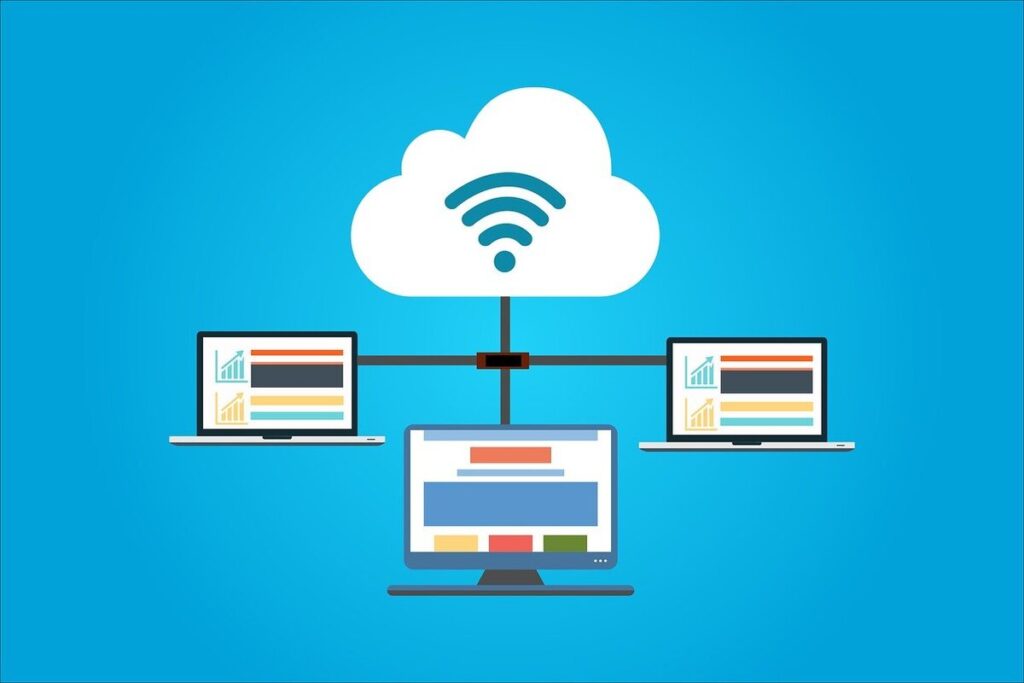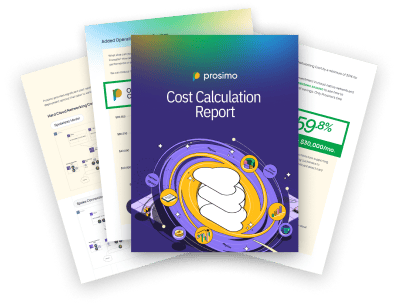While many enterprises leverage cloud services for innovation, business growth, and flexible scalability, determining the actual costs can often be ambiguous. Cloud service vendors present a wide array of payment models, and numerous additional factors play a significant role in shaping pricing.
In this guide, we will delve into the complexities of cloud computing costs and shed light on the essential elements that influence them. By clarifying these key factors, we aim to provide a practical roadmap that empowers businesses to navigate the financial landscape of cloud services effectively. Understanding these pricing dynamics will enable organizations to make informed decisions that align with their operational needs and budget constraints.

Overview of Cloud Service Costs
The cost of cloud services can fluctuate significantly due to various contributing factors, and these costs differ substantially across providers. To help clarify, the table below outlines some of the most important pricing elements that influence cloud service expenses. These factors are key to understanding the financial commitments involved, and in the next section, we’ll delve deeper into each one to provide a more detailed breakdown.
| Pricing Factors | Cost |
| Network Infrastructure | Costs are based on bandwidth usage. Typically measured on a monthly basis. Example: Begins at $2.50 per month. |
| Storage | Depends on storage type and volume. Often charged per user, per month. Example: Ranges from free (limited storage) to $15/user/month (unlimited storage). |
| Maintenance and Updates | Covers ongoing system maintenance and software updates. Generally calculated monthly for a set number of users. Example: Starting at $5,000 per month for 500 users. |
| Hidden Charges | May include exit fees, which are often confidential and contract-dependent. Additional costs can stem from regional availability zones and support services. |
By understanding these factors, businesses can make more informed decisions regarding their cloud service investments. This insight into potential costs helps avoid unexpected charges and allows for better budgeting and planning.

How Much Do Cloud Services Typically Cost?
Calculating the cost of cloud services can feel overwhelming due to the range of variables involved. Many cloud service providers offer pricing calculators, which allow you to select specific products and input usage details to receive an estimate. However, predicting your actual usage and the resulting charges can be challenging, as needs often evolve over time. To better understand your potential expenses, it’s helpful to explore the most common pricing models cloud vendors use. Here’s a breakdown of how different vendors typically structure their cloud computing costs.
Key Factors Influencing Cloud Computing Pricing
Various elements determine the overall cost structure of cloud computing services. These include the types and quantities of services utilized, computing resources needed, and the storage demands of your specific operations. Additionally, providers consider data transfer rates, which can vary dramatically based on the volume and speed at which data moves within the network. Understanding these factors helps businesses optimize their cloud expenditures effectively.
Network Costs in Cloud Computing
Cloud computing is built on a scalable, high-performance network infrastructure that ensures seamless data transfer and connectivity between different components. The cost here is typically tied to bandwidth usage, as well as the amount of data transmitted in and out of the cloud. By monitoring network usage and optimizing transfer rates, businesses can manage their cloud networking costs more efficiently.
Understanding Cloud Storage Costs
Storage is a major contributor to cloud computing expenses, with pricing depending on the type of storage (file, block, or elastic), performance requirements, and additional features. Options like automated backups, data replication, and high availability features often come at a premium, increasing the overall cost. Selecting the right storage type based on business needs can significantly impact cost savings.
Investment in Hardware and Maintenance
Cloud providers constantly invest in top-tier hardware such as servers, memory, and processors to maintain optimal performance. In addition to hardware, ongoing maintenance of essential infrastructure like firewalls, routers, and security updates also affects pricing. These investments ensure that clients receive reliable and secure services, but they are reflected in the overall costs.
Uncovering Hidden Fees in Cloud Computing Costs
Many cloud providers include hidden fees that can significantly increase your overall expenses. Being aware of these charges is crucial to managing your cloud budget effectively. Below are some of the most common hidden costs to be mindful of when selecting a provider:
Data Overage Charges: Most cloud vendors set a fixed limit on data and storage usage in their pricing plans. Exceeding these limits often results in unexpected additional fees that can quickly add up. Monitoring your data usage is essential to avoid these overages.
Termination Fees: If you decide to switch providers or discontinue services, some vendors impose exit fees for retrieving your stored data. These fees can make the transition more costly than anticipated, so it’s important to understand the terms before committing.
Pricing Discrepancies by Region: Cloud providers frequently charge different rates based on the region or availability zone in which services are offered. Always check pricing specific to your location to avoid surprises when billing arrives.
Support Fees: While basic support is often included, many vendors charge extra for advanced or personalized support services. Tracking and resolving support issues may come with additional costs, so be sure to clarify what’s included in your plan.
Exploring Cloud Pricing Models
Cloud service providers offer various pricing structures tailored to different business needs, ensuring flexibility and scalability. Below are some of the most popular pricing models available to organizations today:
On-Demand Pricing
With this pay-as-you-go plan, businesses are billed based on their actual usage, either on a per-second or per-hour basis. This model provides unmatched flexibility, allowing companies to scale their resources up or down without any upfront financial commitment. It’s particularly ideal for organizations with fluctuating demands that seek cost-efficiency without long-term contracts. For companies looking to maintain operational agility, this pricing model is a highly adaptable solution.
Instance-Based Pricing
In this model, costs are tied directly to the cloud instances or virtual servers a company uses, with the bill reflecting the number of servers and hosts allocated. It’s a straightforward model that suits businesses requiring dedicated computing power, allowing expenses to adjust based on the instances deployed. This pricing method works well for organizations with predictable resource needs, offering transparent costs. Companies that prefer a clear correlation between usage and cost often find this model easy to manage.
Tiered Pricing
Similar to selecting from a menu, tiered pricing provides a range of service bundles, from basic plans with essential features to premium packages offering advanced functionalities. This model allows businesses to select the level of service that best matches their needs and budget. Tier-based pricing is particularly advantageous for companies that want clarity and control over their spending. By offering predefined packages, this model simplifies decision-making for businesses of all sizes.
Subscription Pricing
Subscription-based pricing turns cloud services into a recurring cost, with businesses choosing from monthly, quarterly, semi-annual, or annual plans. This model offers easier budgeting and more predictable expenses, making it ideal for long-term financial planning. Companies can select a subscription length that aligns with their operational timelines and growth strategies. The predictability of this model makes it especially attractive to businesses looking for stability in their cloud expenditures.

Understanding Cloud Computing Costs
Understanding the complexities of cloud computing costs is crucial before making any commitments. With a wide array of services and pricing models available, knowing your business’s unique requirements is essential. Whether you’re focusing on scalability, security, or long-term cost efficiency, having a clear understanding of your infrastructure needs and expected usage patterns is key. This knowledge empowers you to compare vendor options and select the best cloud solution that aligns with your budget and objectives.
Evaluating Your Infrastructure Needs
Transitioning to the cloud often requires a significant investment in IT infrastructure, especially for businesses new to cloud computing. However, if your company is already utilizing cloud services and is simply exploring a shift in providers, the financial and resource impact may be less extensive. Since vendor terms and infrastructure support can vary, it’s important to have a detailed discussion with potential providers about your specific needs. Ensuring that your infrastructure can handle the change without unforeseen complications will also help mitigate risks.
Analyzing Your Cloud Usage
Defining your cloud usage is a fundamental step toward making informed, strategic decisions. Take time to thoroughly analyze your requirements for server capacity, network bandwidth, data storage, and deployment models. By understanding the scale of your business operations, you can opt for the most effective pricing strategy—whether it’s pay-as-you-go, free usage tiers, or subscription-based plans. Aligning your needs with the right plan ensures you’re not overpaying for unused resources while still maintaining optimal performance.
Evaluating Cloud Service Providers
Comparing cloud computing services involves more than just looking at pricing—features, usage limits, and scalability should also be part of your evaluation. Request customized, in-depth quotes from several providers, detailing exactly what they offer in terms of resources, support, and security. This comprehensive approach will help you assess which service aligns best with your technical needs and long-term growth plans.

The Three Primary Types of Cloud Computing Services
Cloud computing services come in a variety of forms, each tailored to meet the needs of both individual users and large enterprises. Understanding the distinct types of services is essential for evaluating costs and comparing options effectively. The three most common models to be aware of are Infrastructure as a Service (IaaS), Platform as a Service (PaaS), and Software as a Service (SaaS). Each offers unique functionalities and pricing structures, which can greatly impact overall business operations and budget planning. By grasping the key differences between these models, users can make more informed decisions about which solution fits their needs.
Infrastructure-as-a-Service (IaaS)
Infrastructure-as-a-Service (IaaS) functions as a comprehensive digital toolbox, offering businesses scalable virtual resources for their storage, networking, and computing requirements. Instead of investing in, configuring, and managing physical servers, companies lease these services from a cloud provider. The infrastructure provided includes all the memory, storage, and networking necessary, delivering a virtual operating environment that is not only scalable but also adaptable to fluctuating business needs. This approach eliminates the need for businesses to handle hardware maintenance and upgrades, making their operations more efficient.
Migrating infrastructure to the cloud allows companies to significantly reduce the high costs associated with developing and maintaining traditional physical infrastructure. A standout feature of IaaS is its flexible, usage-based pricing model. Much like a utility bill, businesses pay based on what they actually consume, with options for long-term subscription contracts, monthly billing, or even pay-per-server or hourly rates. This flexibility allows businesses to control costs and only pay for the resources they use, ensuring optimal financial management of their IT infrastructure.
Platform-as-a-Service (PaaS)
Platform-as-a-Service (PaaS) offers businesses a robust cloud-based solution to streamline their development operations without the complexity of purchasing and managing individual components. Acting like an external IT department, PaaS delivers a full suite of cloud tools that include hardware resources, databases, servers, storage, networks, operating systems, and essential software, all in one package. This makes it easier for businesses to focus on their core operations while leaving the technical infrastructure in capable hands.
Unlike Infrastructure-as-a-Service (IaaS), PaaS shifts more of the IT management responsibilities to the vendor, allowing companies to focus more on application development rather than backend maintenance. It’s especially beneficial for accelerating the app development process by offering pre-configured tools designed for specific software types. For many businesses, this can lead to significant cost savings compared to building and maintaining similar resources in-house. Pricing varies depending on the services used, making it scalable for different needs, and many vendors offer limited-time free trials or subscription plans with upgrade options for additional features.
Software-as-a-Service (SaaS)
Software-as-a-Service (SaaS) refers to cloud-based software applications that are readily accessible and managed by a third-party vendor, eliminating the need for on-site installations. The vendor handles everything from infrastructure to updates, providing enterprise users with seamless access through a web browser. With SaaS, the responsibility for maintaining updates, implementing security patches, and fixing features shifts entirely to the service provider, freeing businesses to focus their resources on utilizing the software instead of developing or managing it themselves.
SaaS pricing models vary widely, offering flexibility to meet different needs, from free trials to monthly and annual subscription plans, and even tiered pricing structures designed to cater to a range of functionality and business requirements.
Cloud Providers Pricing Comparison
Now that the pricing structure has been clarified, it’s time to explore how the costs of cloud computing services stack up among the top providers. While many cloud service providers offer a broad array of solutions, this guide zeroes in on the three most commonly utilized by enterprise clients: Amazon Web Services (AWS) Lambda, Azure Cloud Services, and Google Cloud Platform.
AWS Lambda
Amazon’s cloud computing portfolio is extensive, but AWS Lambda stands out as a leading serverless computing service. It enables businesses to execute code, streamline administrative tasks, and package, deploy, and manage multiple functions with ease. As part of the AWS Free Tier plan, Lambda offers users one million free requests each month, helping businesses manage costs effectively. Its flexible pricing model, Compute Savings Plan, is structured in dollars-per-hour, providing up to 17 percent in savings for users who commit to a set usage level, allowing for both cost predictability and optimization.
When an event notification trigger occurs, AWS Lambda initiates a request and charges for the resources consumed during the execution of the function. The cost is primarily based on the duration in milliseconds that your code runs, alongside the memory allocated to your functions and the specific processor architecture used. This means that every millisecond and memory allocation directly affects the total pricing.
Pricing Breakdown by Architecture, Duration, and Memory
| Architecture | Duration | Requests/Memory Allocated | Price |
| X86 (First 6 Billion GB-seconds/month) | $0.0000166667 per GB-second | Per 1M requests | $0.20 |
| Arm Price (First 7.5 Billion GB-seconds/month) | $0.0000133334 per GB-second | Per 1M requests | $0.20 |
| X86 (128 MB memory) | Per millisecond of memory usage | $0.0000000021 | |
| Arm Price (128 MB memory) | Per millisecond of memory usage | $0.0000000017 |
This table outlines how pricing is structured based on the architecture type, duration of execution, and memory consumption, giving you a clear understanding of how your usage translates into costs.
Google Cloud Platform: A Comprehensive Suite of Cloud Services
Google provides robust, enterprise-level cloud services through the Google Cloud Platform. This platform offers an extensive array of computing products, including the App Engine, Compute Engine, VMWare Engine, Spot VMs, Cloud GPUs, and many others, all complemented by an integrated storage solution designed to meet various business needs.
Google’s pricing model operates on a pay-as-you-go basis, allowing for flexibility in managing costs, with additional discounts for prepaid resources to maximize savings. The platform also offers free-tier products with set usage limits, and new customers receive $300 in free credits to explore its services. For Compute Engine, usage is calculated in gibibytes (GiB) and is based on factors such as disk size, network activity, and memory consumption, ensuring a transparent and detailed billing process.
Each Google product comes with its own unique pricing structure, which can be estimated using the pricing calculator or by reaching out to the sales team for more in-depth information and personalized quotes. Below is a sample breakdown of categories and their associated prices:
| Category | vCPUs | Memory | Monthly Price |
| c3-standard-4 | 4 | 16GB | $152.48 |
| c3-highmem-4 | 4 | 32GB | $205.74 |
| e2-standard-2 | 2 | 8GB | $48.91 |
| e2-highcpu-16 | 16 | 16GB | $288.89 |
To get the most accurate cost for your specific needs, using the pricing calculator or contacting the sales team is highly recommended.
Azure Cloud Services: Powering Your Cloud Applications with Flexibility
Microsoft Azure Cloud Services operates as a Platform-as-a-Service (PaaS) model, providing a robust environment for deploying cloud applications and services with unmatched availability and adaptable scalability. Its flexibility makes it a go-to choice for businesses needing a reliable cloud infrastructure.
Azure offers a free trial for new users, with certain services remaining free for a limited time or usage limits—some products are free based on the number of requests, instances, memory usage, or hours used, while others have a 12-month free period. Key free services include Azure Virtual Machines (Windows and Linux), Azure Functions, and Azure App Service, making it an attractive option for developers testing the waters.
Explore the Pricing Structure of Azure Cloud Services
Azure Cloud Services pricing follows a pay-as-you-go approach, where costs vary based on factors like instances, cores, RAM, and storage requirements. Microsoft offers several virtual machine series to cater to different business needs. For instance, the A series is perfect for entry-level development and testing, the B series is better suited for moderate workloads, and the D series handles production-level workloads efficiently.
| Instance | Cores | RAM | Temporary Storage | Monthly Price |
| A0 | 1 | 0.75 GB | 20 GB | $14.60 |
| A4 | 8 | 14 GB | 2040 GB | $467.20 |
| D1 | 1 | 3.50 GB | 50 GB | $102.20 |
| D4 | 8 | 28 GB | 400 GB | $817.60 |
| D14 | 16 | 112 GB | 800 GB | $1,541.03 |
With multiple series available, businesses can select the virtual machine type that best suits their operational needs while managing costs effectively.
Conclusion
Cloud computing costs in 2024 are shaped by various factors such as storage, network infrastructure, maintenance, and hidden fees, making it crucial for businesses to evaluate their needs carefully. By leveraging cloud service calculators, monitoring data usage, and understanding pricing models like on-demand and subscription-based, companies can optimize their cloud expenses. A proactive approach ensures they avoid hidden charges and select a plan that supports both scalability and cost-efficiency. Prosimo offers an intelligent solution for businesses aiming to manage cloud spending effectively, delivering enhanced performance without unexpected costs. As cloud computing continues to evolve, having a clear understanding of the pricing dynamics will remain critical for any organization’s long-term success.
Frequently Asked Questions
`1. What is the most common pricing model for cloud services?
The most common pricing models include on-demand pricing, where businesses pay based on usage, and subscription pricing, which involves fixed costs over a set period. Each model offers flexibility based on your business needs.
2. How can businesses avoid hidden cloud computing fees?
Monitoring data usage, understanding region-specific pricing, and clarifying support and termination fees can help businesses avoid unexpected charges. Regularly reviewing the service agreement is also essential.
3. Is cloud storage more cost-effective than traditional storage solutions?
Yes, cloud storage often offers greater flexibility and scalability compared to traditional on-premise solutions, especially for businesses with fluctuating data storage needs. It allows companies to pay only for the storage they use.
4. How do cloud service providers calculate network costs?
Network costs are typically based on bandwidth usage and the amount of data transmitted within the cloud environment. These costs can increase based on the volume and speed of data transfers.
5. What should businesses consider when choosing a cloud provider?
Key considerations include pricing, scalability, security features, and the level of customer support offered. It’s also important to evaluate the specific infrastructure and resources your business requires.
